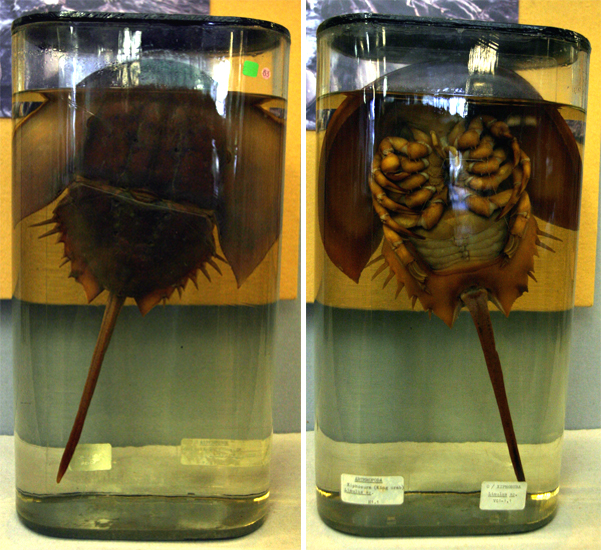
CLASS MEROSTOMATA
| |
Only four species of xiphosurans, horse shoe crabs, have survived into modern times. Limulus polyphemus, has a characteristic horse shoe shaped prosomal carapace. Its abdomen is protected by a dorsal serrated shield trailing an articulating telson. The telson is used for leverage against the soft substrates of the sea and estuary beds where the crabs live. Their compound eyes can detect movement and the direction of light. The ventral view of the specimen shows the chelicerae in front of the mouth and the five pairs of similar chelate legs. Horseshoe crabs are scavengers feeding on molluscs worms and other organisms. Food is picked up by the chelate legs and passed to the gnathobases, the spiny bases of the legs, which macerate the food and channel it towards the mouth. The fifth legs are modified for digging. The abdomen bears five pairs of flap like gills which are used for respiration and as paddles for swimming. Mating occurs along the beaches of North-West America and South-East Asia. Modified claws on the male crab’s first pair of legs grip the female as the eggs are fertilised. A pelagic trilobite-like larva attains the adult form through a series of moults. |
 |






